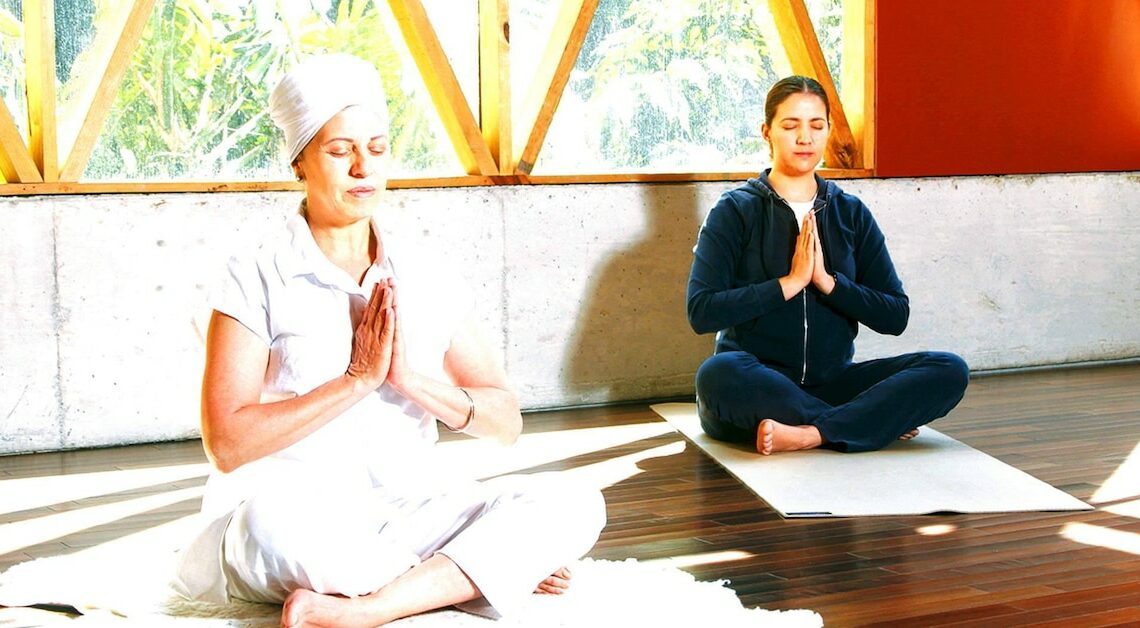
Kundalini Yoga combines physical, mental and spiritual practices. The aim is to expand consciousness and activate the energy in the body.
Definition & interesting facts about Kundalini Yoga
Kundalini Yoga is a form of yoga that is intended to awaken the dormant, creative energy in the body. Kundalini stands for an inherent source of power. With Kundalini Yoga you combine various practices that are dynamic and meditative.
- Kundalini energy: The Kundalini energy is depicted as a sleeping serpent resting at the base of the spine. Through physical and mental practices, the energy is activated and channeled upwards through the chakras or energy centers of the body until it reaches the crown chakra, which is located at the top of the head.
- Goal of yoga practice: The aim of Kundalini Yoga is to dissolve inner blockages, to free yourself from emotional and physical problems and to develop spiritually. It is about discovering your self and spiritually awakening. The chakras are cleansed and brought into balance.
- Emphasis on spirituality: The exercises can be quite strenuous. However, the sporting aspect of this yoga practice is secondary. If you are aiming to improve your fitness, you can use other yoga practices, such as the online yoga program Asana Rebel. Kundalini yoga is primarily about the flow of energy in the body. It is primarily spiritual in nature.
- Special clothing: Some people wear special white clothing during Kundalini Yoga to protect the aura. Covering the head with a turban is said to help keep the energies in the body.
Kundalini Yoga: Fixed exercise sequences
The form of yoga is based on three core elements: breathing techniques (pranayama), physical exercises (asanas) and meditation (dhyana). These are combined with special hand positions, mantras (sacred syllables or sequences of words that are recited) and energy control. Depending on whether you want to relieve fears or open your heart, for example, there are specific exercise sequences (kriyas). Various exercises are typical for Kundalini Yoga.
- Systematic exercise structure: The exercises build on each other. First, the energies are activated and then made to flow. The flow of energy is intended to release blockages and increase the energetic feeling in the body.
- Breathing exercises: Various breathing techniques are an essential part of Kundalini Yoga. These include, for example, slow and deep breathing, which is intended to calm and regulate the nervous system. The “breath of fire” is also one of them. This breathing technique involves breathing in and out quickly and rhythmically through the nose to release energy.
- Postures: One of the postures in Kundalini Yoga is “Sat Kriya”. To do this, sit on your heels and stretch both arms up close to your ears. All fingers are interlaced except for the index fingers. The mantra “Sat Nam” is recited in sync with the breathing. In contrast, the powerful frog position makes the hips more flexible and strengthens self-confidence and resilience.
- Meditation and Mantras: The meditation practices in Kundalini Yoga ensure that the mind is focused and in harmony with itself. The Adi Mantra is sung before beginning a yoga practice. With this mantra you connect with the higher consciousness. The movement exercises are followed by deep relaxation.
- Hand gestures: One of the classic hand gestures (mudras) is Gyan Mudra. In this gesture, you touch your thumb and index finger to activate the energy of wisdom.
